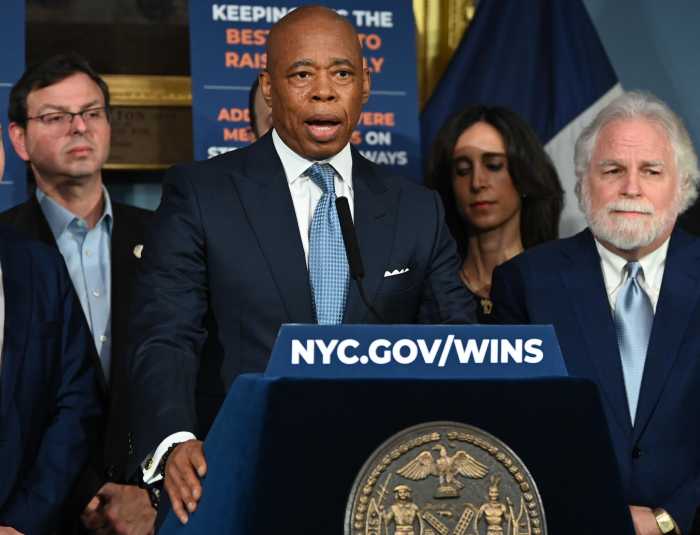The ongoing debate about congestion pricing loses sight of one of the program’s principal goals, which is to improve transportation equity.
With all the focus on drivers, you hear much less about the 90% of commuters who take mass transit into Manhattan’s Central Business District from all reaches of the region – even New Jersey.
Somehow New Jersey elected officials aren’t so concerned about their constituents who hop on the A train after riding a bus over the George Washington Bridge. But the MTA is, and thankfully for those folks, we’re ready to go with congestion pricing.
We hope to start it this June, so long as we’re not delayed by insane pro-traffic lawsuits. The necessary infrastructure is already 95% installed, with work at the final locations underway. Con Edison and Verizon are enabling power and communications respectively, and more than 50% of license plate readers are in some level of testing. All the back-office work and community outreach are nearly done, too, with final public hearings taking place March 4.
Most importantly, in preparation for Day One of tolling cars, we increased frequencies on 11 subway lines thanks to a major investment from the State, implemented the LIRR’s largest-ever service increase (another 271 trains per day!) while opening a brand-new terminal at Grand Central Madison, and budgeted to continue increasing bus service through our borough-by-borough Bus Network Redesigns.
And there’s a lot more meant to come as part of the 2020-2024 Capital Program – though, unfortunately, projects are now in serious jeopardy because of those lawsuits. Funding for 50% of the work we have left is supposed to come from congestion pricing revenues, and so the pending litigation has forced us to stop issuing new procurements.
This is unfortunate, to say the least, because we’ve made great strides these last few years, awarding more than $9 billion in new contracts per year on average. Now, we will initiate barely a third of that – and the impact on riders is going to be very real.
More than 20 ADA stations are at risk across all boroughs – five stations in the Bronx from Mott Haven to Kingsbridge to Wakefield; Briarwood and Jamaica in Queens; southern Brooklyn stations in Bensonhurst and Coney Island; as well as Nostrand Av at the intersection of Crown Heights and Bedford Stuyvesant; plus, major complexes like 42 St-Bryant Park and Lexington Avenue-59 St.
The modern signals that were promised on six subway lines? On hold for 1.5 million A/C and B/D/F/M riders, all the way out to Far Rockaway and up through the Bronx and northern and eastern Queens. That’s more than the ridership of the next five largest subway systems in the country combined.
I could keep going with impacts to critical state of good repair and resiliency work that ensure reliability of service, new rolling stock for all agencies, our Zero Emissions Bus program, and even Second Avenue Subway Phase 2, but there’s only so much room in this column.
Nobody wants to see these projects needlessly delayed by frivolous lawsuits, and I’m hopeful they won’t be. On the merits, I’m confident the environmental review and community outreach undertaken for congestion pricing were extremely thorough. But it’s out of our hands for now. In the meantime, MTA stands ready to deliver the better transit, safer streets and cleaner air New Yorkers deserve.
Janno Lieber is MTA chair and CEO.
Read more: Op-Ed: ‘Good Cause Eviction’ Law Criticized for Hurting Property Owners































